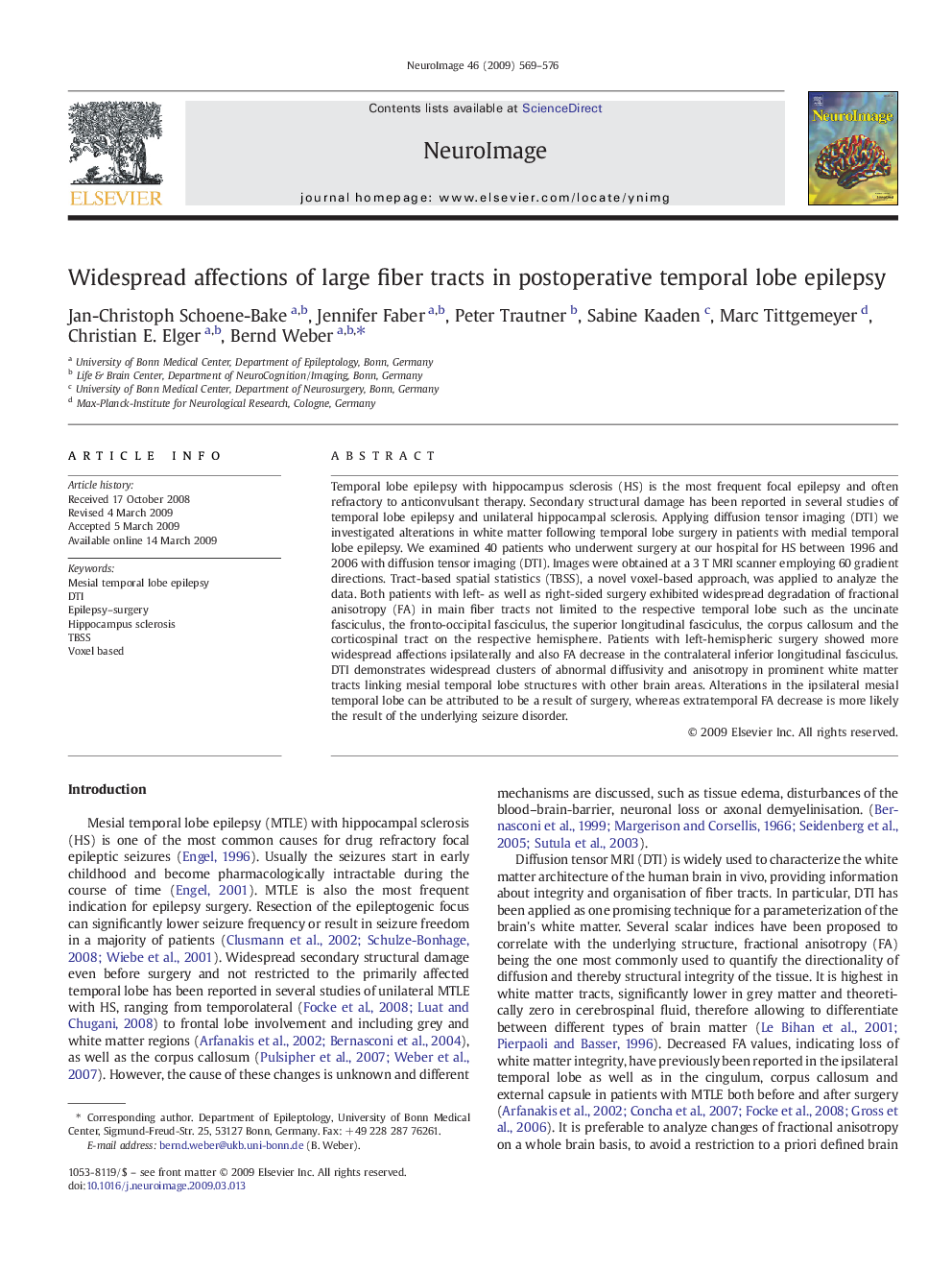| Article ID | Journal | Published Year | Pages | File Type |
|---|---|---|---|---|
| 6037840 | NeuroImage | 2009 | 8 Pages |
Abstract
Temporal lobe epilepsy with hippocampus sclerosis (HS) is the most frequent focal epilepsy and often refractory to anticonvulsant therapy. Secondary structural damage has been reported in several studies of temporal lobe epilepsy and unilateral hippocampal sclerosis. Applying diffusion tensor imaging (DTI) we investigated alterations in white matter following temporal lobe surgery in patients with medial temporal lobe epilepsy. We examined 40 patients who underwent surgery at our hospital for HS between 1996 and 2006 with diffusion tensor imaging (DTI). Images were obtained at a 3Â T MRI scanner employing 60 gradient directions. Tract-based spatial statistics (TBSS), a novel voxel-based approach, was applied to analyze the data. Both patients with left- as well as right-sided surgery exhibited widespread degradation of fractional anisotropy (FA) in main fiber tracts not limited to the respective temporal lobe such as the uncinate fasciculus, the fronto-occipital fasciculus, the superior longitudinal fasciculus, the corpus callosum and the corticospinal tract on the respective hemisphere. Patients with left-hemispheric surgery showed more widespread affections ipsilaterally and also FA decrease in the contralateral inferior longitudinal fasciculus. DTI demonstrates widespread clusters of abnormal diffusivity and anisotropy in prominent white matter tracts linking mesial temporal lobe structures with other brain areas. Alterations in the ipsilateral mesial temporal lobe can be attributed to be a result of surgery, whereas extratemporal FA decrease is more likely the result of the underlying seizure disorder.
Keywords
Related Topics
Life Sciences
Neuroscience
Cognitive Neuroscience
Authors
Jan-Christoph Schoene-Bake, Jennifer Faber, Peter Trautner, Sabine Kaaden, Marc Tittgemeyer, Christian E. Elger, Bernd Weber,
